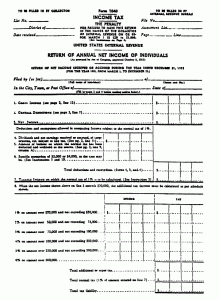 As my blog-neighbor Lee Rosenbaum reports, the proposed 2014 budget from the White House would cap the tax benefit for charitable donations at 28%. In the U.S., where donations are deducted from the income tax base, the actual rate at which your donation is subsidized is your marginal tax rate, i.e. the rate that applies to your last dollar of income earned. Marginal tax rates rise with income, with a top rate of 39.6%, and so a wealthy donor who gives $100 to the local museum gets an income tax reduction of $39.60. The budget proposal would limit this reduction to $28. For taxpayers with a marginal tax rate of 28% or less, the proposal has no impact.
As my blog-neighbor Lee Rosenbaum reports, the proposed 2014 budget from the White House would cap the tax benefit for charitable donations at 28%. In the U.S., where donations are deducted from the income tax base, the actual rate at which your donation is subsidized is your marginal tax rate, i.e. the rate that applies to your last dollar of income earned. Marginal tax rates rise with income, with a top rate of 39.6%, and so a wealthy donor who gives $100 to the local museum gets an income tax reduction of $39.60. The budget proposal would limit this reduction to $28. For taxpayers with a marginal tax rate of 28% or less, the proposal has no impact.
Would this lower the amount people give to nonprofits? Yes: all econometric evidence points to the fact that the rate at which donations are subsidized matters for the amount people give. We may have anecdotes about people who claim the tax break doesn’t matter, but in aggregate it does.
Does that mean the budget proposal is wrong? Not necessarily. There is nothing particularly special about the status quo of the tax deduction. And there are legitimate questions about whether higher income donors ought to receive a larger tax break than lower income donors, as the current system holds. There are alternatives: Canada, for example, gives a tax credit on donations, the same rate applying to all donors.
I wrote a short paper in 2010 – with commentary from my colleagues Kirsten Gronbjerg and Les Lenkowsky – when this proposal was first floated, and I’ll post it here because none of the key issues have changed since then.

[…] smaller, poorer, but well-run schools. The problem is exacerbated by the richest donors receiving a larger per-dollar tax subsidy for their donations than those in lower tax brackets, or who fail to itemize donations at all. […]
[WORDPRESS HASHCASH] The comment’s actual post text did not contain your blog url (http://www.artsjournal.com/worth/2013/04/limiting-the-charitable-deduction) and so is spam.